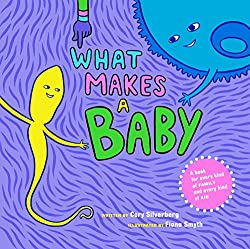This Month's Featured Books
- windowsmirrors
- Apr 25, 2021
- 6 min read
Updated: Apr 30, 2021
One book from each section of the library that I have chosen to summarize and examine through the lens of diversity. Try to see each of these books as windows and mirrors as well as conversation starters!
Culture:
The Name Jar
Written and illustrated by Yangsook Choi

Summary: A young girl named Unhei (Yoon-Hey) struggles with her how her name fits into her new life in the United States after immigrating from Korea. On her way to the first day of school, in her new home town, Unhei is already ridiculed due to her name. When Unhei makes it to her classroom she decides she needs an American name and asks her new classmates for help choosing one. A variety of American names are written on slips of paper by the other students and placed inside of a jar. As Unhei reads through the names she can not find one that suits her. Later on a young boy, named Joey, becomes friends with Unhei. Joey supports and accepts Unhei for who she is and helps her to appreciate her given name. Unhei decides she likes her name and wants to keep it so she educates the class in how to pronounce her name and the beautiful meaning behind it.
Importance: This book not only introduces students to another culture but also brings to light issues such as microagression, identity, difference, and cultural assimilation. At the beginning of the story, the students on the bus tease Unhei about her name and its pronunciation representing a common microaggression. It goes on to teach students how enacting these behaviors lead to hurt feelings and a sense of estrangement. It seems as if Unhei has such a hard time finding an American name because her name represented an important cultural piece of her identity, while none of these new names did. Her struggle and acceptance of her identity despite her negative experiences because of it is an important uplifting message to send to student. Differences are okay and everyone should have the right too feel comfortable being who they are.
Choi, Y. (2001). The Name Jar. New York, NY: Dragonfly Books.
Garrison, S. (Director). (2020, March 20). Read along with Ms. GARRISON #3 - the Name jar [Video file]. Retrieved April 26, 2021, from https://youtu.be/bGCuOEoEXSc
Gender and Sexuality:
What Makes a Baby: A Book For Every Kind of Family and Every Kind of Kid
Written by Cory Silverberg Illustrated by Fiona Smyth

Summary: A simplified version of how babies are made using eggs, sperm, and the uterus while not relating these biological aspects of a person to a specific gender. Containing questions about who is important to the reader and who they consider their parents making it a representative book for all families.
Importance: This book allows for all children to get the answers about where they came from and understand that there is more than one way to make a baby. I appreciated how this book is the truth, but not overwhelmingly so. Most importantly, by asking the readers questions this book allows for an engaging experience and for deeper critical thinking. The discussion this book starts is one that is normally shied away from and I think this book is a great start to allowing students to feel more comfortable with the topic at hand. One other thing I was very impressed with about this book is how many languages it is available in! You can get this book in English, Spanish (ether U.S. or Spain), Chinese, German, Swedish, Lithuanian and Bulgarian. A variety of language availability is an important aspect of diversity; it can expose students to another language and allow for ESL students to see their language represented and have materials to use themselves.
A Quick Side Note: Cory Silverberg at his website (linked here), you can find a free, 61 paged, reader's guide as well as other resources. Silverberg has two other books dealing with the topic that revolve around gender, sex, and sexuality. He wrote Sex is a Funny Word: A Book about Bodies, Feelings, and YOU and co-wrote The Ultimate Guide to Sex and Disability with Miriam Kaufman.
Silverberg, C. (n.d.). Cory Silverberg. Retrieved April 28, 2021, from www.corysilverberg.com/about
Silverberg, C. (2012). What makes a baby: A book for every kind of family and every kind of kid. New York, NY: Seven Stories Press.
Silverberg, C. (Director). (2020, April 22). What makes a baby storytime [Video file]. Retrieved April 26, 2021, from https://youtu.be/TQN_Wuxm45E
Social Class:
The Table Where Rich People Sit
Written by Byrd Baylor Illustrated by Peter Paranall

Summary: Two parents who sit with their family everyday at a scratched-up table, made from trash picked wood, claim they are rich. Their daughter, Mountain Girl, argues they need to make more money since she believes they do not have enough. She claims that instead of working where they love too, in the felids, that they should work somewhere that pays more. The family goes through their finances together but they do not just count their money they also count their happiness. In the end Mountain Girl realizes that her family is rich.
Importance: Although this book does not address all the issues associated with class, it does represent the lower class in a positive light and bring up some important lessons. One lesson being that having money is not everything. It allows for individuals in or outside of this social class to experience acceptance. I think this would be a great book to get students to start thinking and learning about class and the issues surrounding it.
Baylor, B. (1998). The Table Where Rich People Sit. New York, NY: Aladdin Paperbacks.
Khalil, J. (Director). (2020, November 12). Read aloud: The table where rich people Sit written By Bryd Baylor and pictures by Peter Parnall [Video file]. Retrieved April 26, 2021, from https://youtu.be/u8Plzn1-WaQ
Disability:
We'll Paint the Octopus Red
Written by Stephanie Stuve-Bodeen Illustrated by Pam Devito

Summary: A young girl, Emma, finds out she is getting a new baby brother named Issac. Emma and her dad go through a whole list of things she is going to do with her new baby brother after he is born. Later, her dad sits her down and tells Emma her new brother is going to be born with something called Down Syndrome. Emma and her dad then revisit their list and they both realize that Emma and Issac will still be able to do all of these things together. Emma then meets her new baby brother and let's him know she will teach him how to paint the octopus red. In the back of the book there is also a list of common questions kids ask with well thought out answers.
Importance: This book teaches kids about how disability does not limit what an individual can do. It also shows a type of family that is not very represented in the typical classroom library. It also opens a up dialogue with students to discuss disability and different parts of their identities. We'll Paint the Octopus Red also holds a special place in my heart as my younger brother was born with Down Syndrome and my mom would read this book to me to help me understand.
I have also attached a lesson plan I made for one of my field placements using this book.
Campbell, D. (Director). (2019, February 16). We'll paint the octopus red [Video file]. Retrieved April 26, 2021, from https://www.youtube.com/watch?v=O6ZBXPgBDfk
Stuve-Bodeen, S. A. (1998). We'll Paint the Octopus Red. Betesda, MD: Woodbine.
Race:
Mixed: A Colorful Story
Written and Illustrated by Arree Chung

Summary: At the start there are only three colors; red, yellow, and blue, also known as the primary colors. These colors all lived together in unity until the reds spoke up and said, "reds are the best!" Yellow speaks up to disagree and blues segregate themselves from the others. Eventually, all of the colors only live and socialize among those like them. One day, a blue and yellow become friends but some of the colors have a problem with this. Blue and Yellow notice they make each other better, that they compliment each other, so they decided to mix and they make Green. Green has traits from both blue and yellow, but also some of her own. The other colors began to mix too, creating both secondary and tertiary colors. All colors new and old begin to live together once again.
Importance: This book takes on big issues such as segregation, discrimination and feelings of superiority. Blue and Yellow's relationship also demonstrates how interacting with people who are different from you has positive outcome. Overall this story sends a message of acceptance and leads to conversations about these issues.
Banana, J. (Director). (2019, April 05). Mixed a colorful story I by Arree chung I Jana's BANANAS STORYTIME [Video file]. Retrieved April 26, 2021, from https://www.youtube.com/watch?v=U1ee0ZZ4WyU
Chung, A. (2018). Mixed: A Colorful Story. New York, NY: Scholastic.
Religion:
Hats of Faith
Written by Medeia Cohan Illustrated by Sarah Walsh

Summary: A very simple yet well thought out text which gives examples of different religious head coverings, or hats, and the faiths which they represent. The end leaves you with a heartwarming message about love and peace.
Importance: This book exposes students to a multitude of religions and allows them to learn just something small about them. I also appreciated that it does not lump all individuals of these faiths into wearing their head coverings as it uses the phrase "which many of." It also welcomes students into a conversation and interest in learning about other religions.
Cohan, M., & Walsh, S. (2017). Hats of Faith. San Francisco, CA: Chronicle Books, LLC.
Gill, J. (Director). (2020, May 19). Hats of faith [Video file]. Retrieved April 26, 2021, from https://www.youtube.com/watch?v=WuGuZ-ASo_Q













Comments